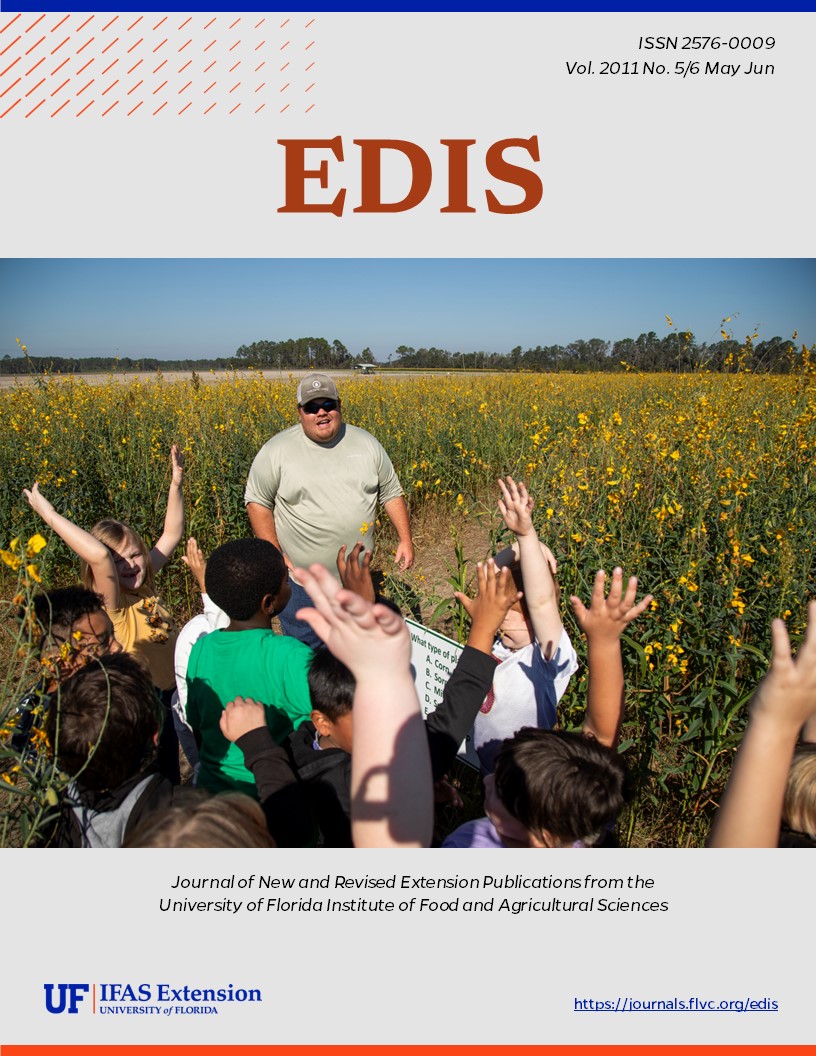Abstract
Commonly called the milkweed assassin bug, because it closely resembles the milkweed bug, it is also known as the longlegged assassin bug and the Zelus assassin bug. Members of the genus Zelus belong to the subfamily Harpactorinae and are diurnal in nature. They are generalist predators feeding on a wide range of soft-bodied prey in garden and fields, such as mosquitoes, flies, earthworms, cucumber beetles, and caterpillars (fall armyworm, rootworm, etc.) Learn more in this 7-page fact sheet written by Megha Kalsi and Dakshina R. Seal and published by the UF Department of Entomology and Nematology Department, February 2011.
References
BugGuide. (October 2009). Species Zelus longipes - Milk-weed Assassin Bug. BugGuide.net. http://bugguide.net/node/view/4832 (27 January 2011).
Carrel JE. 2001. Response of predaceous arthropods to chemically defended larvae of the pyralid moth Uresiphita reversalis (Guenée) (Lepidoptera: Pyralidae). Journal of the Kansas Entomological Society 74: 128-135.
Cogni R, Freitas AVL, Filho FA. 2000. Influence of prey size on predation success by Zelus longipes L. (Het., Reduviidae). Journal of Applied Entomology 126: 74-78. https://doi.org/10.1046/j.1439-0418.2002.00593.x
Hall DG. (2008). Biological control of Diaphorina citri. Concitver. http://www.concitver.com/huanglongbingYP-silidoAsiatico/Memor%C3%ADa-8%20Hall.pdf (28 January 2011).
Hart ER. 1986. Genus Zelus Fabricius in the United States, Canada, and Northern Mexico (Hemiptera: Reduviidae). Annals of the Entomological Society of America 79: 535-548. https://doi.org/10.1093/aesa/79.3.535
Melo MC, Coscaron MC, Filho BA. 2005. Immature stages of Zelus longipes (Heteroptera: Reduviidae, Harpactorinae). Transactions of the American Entomological Society 31: 101-110.
Ralston JS. 1977. Egg guarding by male assassin bug of the genus Zelus (Hemiptera: Reduviidae). Psyche 84: 103-107. https://doi.org/10.1155/1977/60487
Wolf KW, Reid W. 2000. Th e architecture of the anterior appendage in the egg of the assassin bug, Zelus longipes (Hemiptera: Reduviidae). Arthropod Structure and Development 29: 333-341. https://doi.org/10.1016/S1467-8039(01)00010-X
Wolf KW, Reid W. 2001. Surface morphology of legs in the assassin bug Zelus longipes (Hemiptera: Reduviidae): A scanning electron microscopy study with an emphasis on hairs and pores. Annals of the Entomological Society of America 94: 457-461. https://doi.org/10.1603/0013-8746(2001)094[0457:SMOLIT]2.0.CO;2

